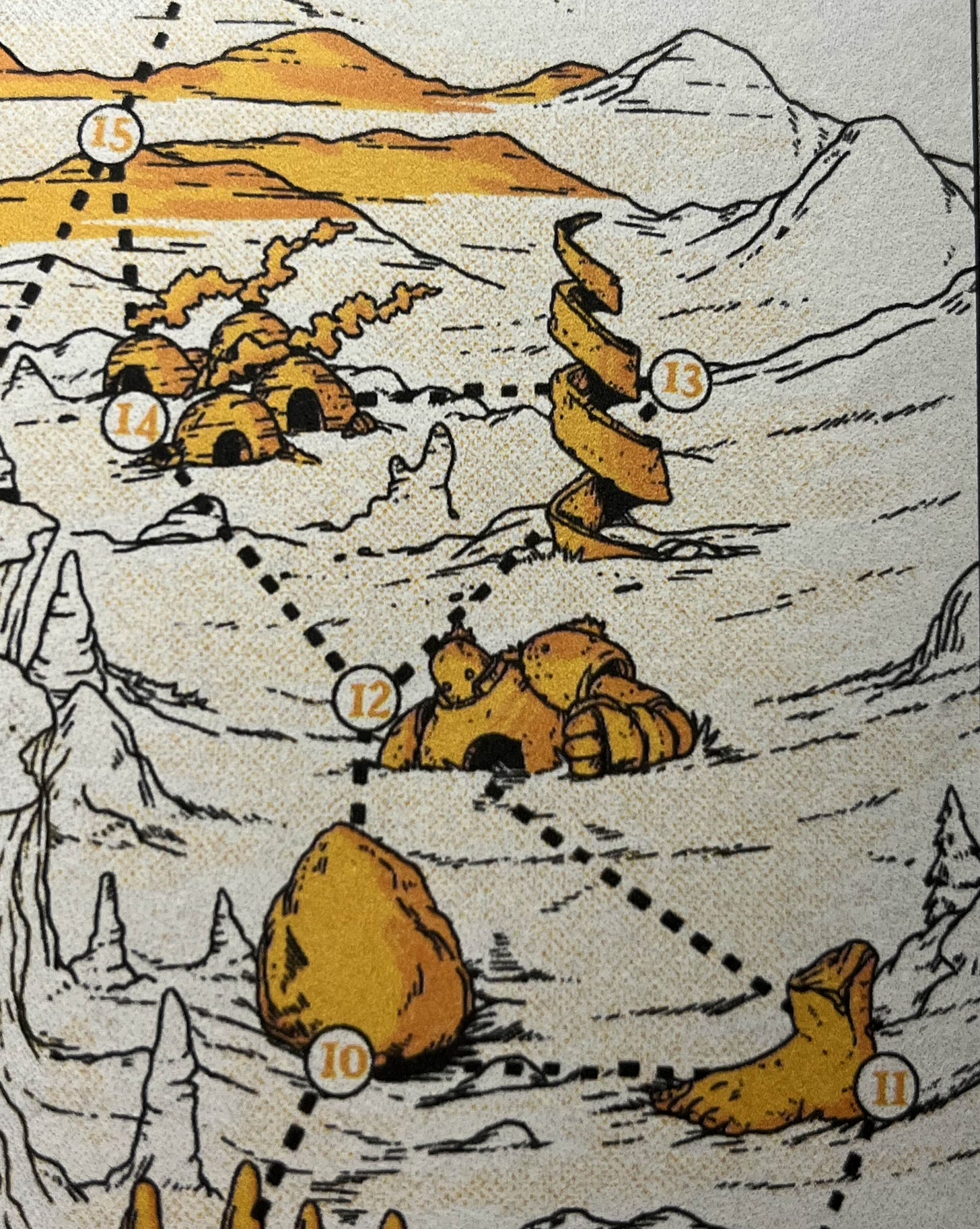Forward: It’s been a few weeks I’ve posted. No, I didn’t get lost under a glacier (unfortunately). I’ve been working on something big, and you’ll hear about it this weekend. Until then, enjoy an unexpected Very Long Day holiday post.
Ok, the tutorials have been great. I’ve had a wonderful time teaching you about hexflowers, showing you how I use mapmaking tools in games like Cairn2e and Mythic Bastionland, and discussing theory of folk-inspired gaming and grounded fantasy. And who could forget about Gold in the Wood? Surely not me.
But now I warn you, we don’t have time to keep training, for now we’re running a game tomorrow morning! We need to put our resources to use and we need to do it now. One of my players has devoted himself to an order of swordsmen and the stage is set to introduce four rival sword-wielding factions. Let’s get down to business, to secrete the puns!

Time to pick tonight’s roster of resources:
In 2025, your resource list is a cornerstone of your GM craft. Countless tables and charts exist online, so it takes dedication to pick out the best. Today we have a full quiver of excellent tools from OSR/NSR community creators.
The tools: d66 swords is a recent offering from Grinning Rat. It actually provided the initial spark for these factions when a player in my game found an Oathsword while playing The Singing Stones by Brad Kerr. We’ll use it to provide the initial characteristic for each factions’ blades. Then we’ll add d100 Swords for a secondary characteristic. We round that off with two charts on swords from the absolutely prolific d4caltrops, on bladestories and on magic powers. We’ll use a quick chart from MurkDice to set the initial direction for the faction, and follow that up with some more faction details using the Cairn2e Warden’s Guide. If that’s not enough, we’ll add some descriptor words from a dungeoneeing.net table.
Time to enter the fray. Here are the results for rolling up four factions:
Excellent! Each one of the resources contributed valuable inspiration, and I would recommend the lot of them for future use. As you know, now it’s time to add some Gnomestones secret sauce and synthesize the results into the four finished orders of sword. Or not, because instead it got late and I went to bed. Sometimes you only get so much prep time, and let that be a lesson to you!
So, how did my half-formed factions fare come session time? Actually quite well, better than expected. Allow me to elaborate.
As I mentioned, this table is playing The Singing Stones with Old School Essentials rules. In last week’s session, Gus the Oathsword and Akkel the Windmage were camping by the half-golem at Location 12 when they were surprised at dawn by a cohort of bounty-hunters looking for the convict known as Pig Gristle. In this session, a tumultuous series of choices led to a stand-off at the golem, with swordsmen seriously mangled by stone fists and also by a magical whirling dervish. Several henchmen were flung to their death, and ultimately the gauntlet was thrown to instigate a formal duel between Gus (Faction 4) and his rival Thed Blerdham (Faction 2), which Gus won handily. The action is pictured below:
Through this emergent gameplay we discovered an array of important facts about the sword orders. Here at Gnomestones we advocate for this type of half-done prep, because it allows you to scaffold your semi-formed ideas with the whims of your players on the fly, leading to outcomes greater than the sum of their parts.
And with that, we have the seeds we need for our factions! Here are the sword orders at the end of the session. Gus is an Amberhorn, while the rival party had members from the Knights of the River Queen.
There’s a lot more to determine about the factions, but luckily the heroes are in the wilderness so I don’t have to prep it yet. In a future post we’ll revisit these orders to flesh out the lore and to draw some crests. But for the second time in two days, I’m going to bed. See you this weekend for an extra-special installment of Blogstones!







Meant to reply to this last week, but this is really cool! This is exactly how I imagined d66 Swords would work - a springboard for other ideas and tables to play nicely (or not so nicely) together.